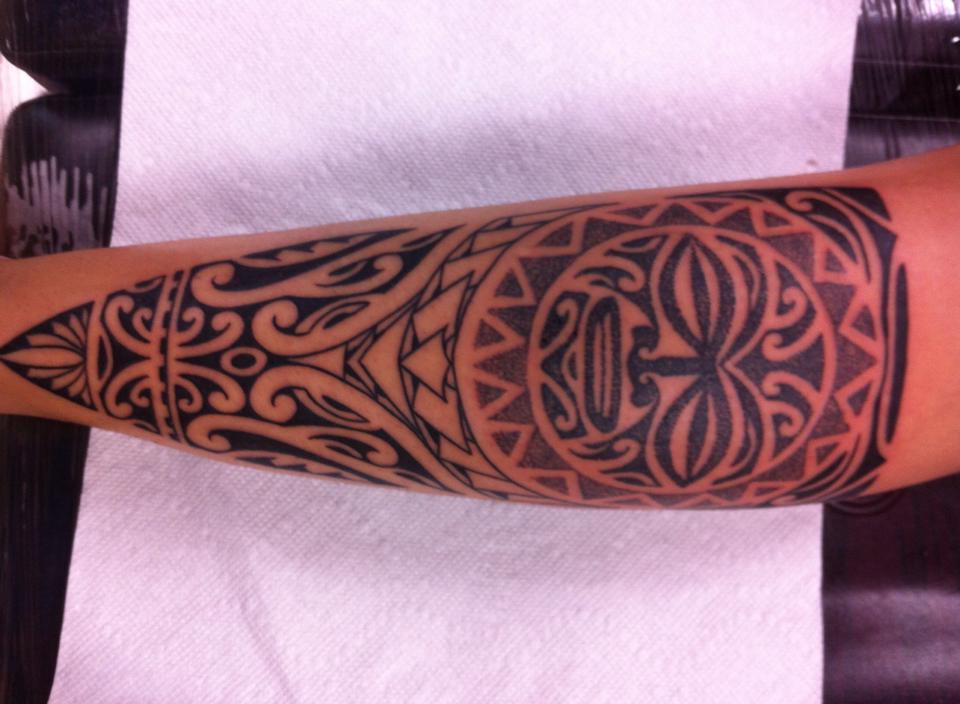For many, travel inspires the desire to make the experience permanent. No longer the exclusive province of sailors and convicts, or so tattoos have been stigmatized in polite society in the past, tattoo art is an increasingly popular way to do that. They are an ancient Hawaiian and Polynesian tradition, a physical and ritual symbol of something Hawaii has no shortage of reputable shops to provide the constant reminder of a memorable experience in paradise. Polynesian-themed tattoos have become popular around the world.
There are nearly 150 licensed tattoo shops in Hawaii, all cleared by the Department of Health. But there are a few things to remember when committing to a permanent tattoo, and to avoid an embarrassing, lifelong reminder of a regrettable, poorly planned foray into the world of body ink.
First, be sure that the shop is licensed, and clearly and actively vigilant about sanitation and safety. Industry regulations require each tattoo artist to renew their license yearly. This license requires, among other things, that the artist pass a test of knowledge of bacteriology and aseptic techniques. It also requires passing a tuberculosis and syphilis test. There are 14 sanitation requirements of any tattoo shops in Hawaii. Know them before you go under the gun, and make sure the shop is in compliance. Ask if they use an autoclave to clean their needles. If not, turn around and walk out the door.
Second, know what you want. Tattoo shops (or parlors, if you prefer) are loaded with books full of stock images or the artists’ portfolios, and choosing from among them is perfectly acceptable. But it is important to know where you want the piece, and how big you want it to be. Do you have a design of your own? Do you want a plumeria blossom on your ankle? A full back piece? A portrait of you mom on your forearm? Your artist will be happy to accommodate. But once that needle meets your skin, there’s no turning back. That unicorn isn’t going anywhere.
Third, tattoos really, really hurt. Talented artists are able to mitigate the pain with their technique, but that doesn’t mean that you aren’t having a needle pierce your skin hundreds of times a minute. They bleed. More detailed work requires a variety of needle, each with its own pain intensity. It may be tempting to anesthetize yourself beforehand, but no honest, reputable artist will tattoo someone who is intoxicated, and they are prohibited by law from doing so. Know going in that it will hurt like hell.
Fourth, proper care of the tattoo once it’s completed is absolutely crucial in making sure it holds its initial vividness and color. The artist will want the piece to look good as much as you, so pay attention to what he or she tells you and follow their instructions scrupulously. It should be covered with a bandage for 24 hours, then washed, patted dry, and slathered with an antibacterial ointment several times a day for three to five days. Don’t scratch or pick at a new tattoo, which leads to bleeding, scabbing, and loss of detail and color.
And last, a tattoo doesn’t change who you are. Getting a Polynesian chest piece won’t turn you into a Hawaiian warrior or make you more “Hawaiian.” The Chinese character for “Peace” won’t make you a Zen master. The best and most rewarding tattoos are those that most accurately reflect the character of the wearer and the vision of the artist. Choose a design that speaks to you, not to anyone else. Again, that unicorn isn’t going anywhere.




